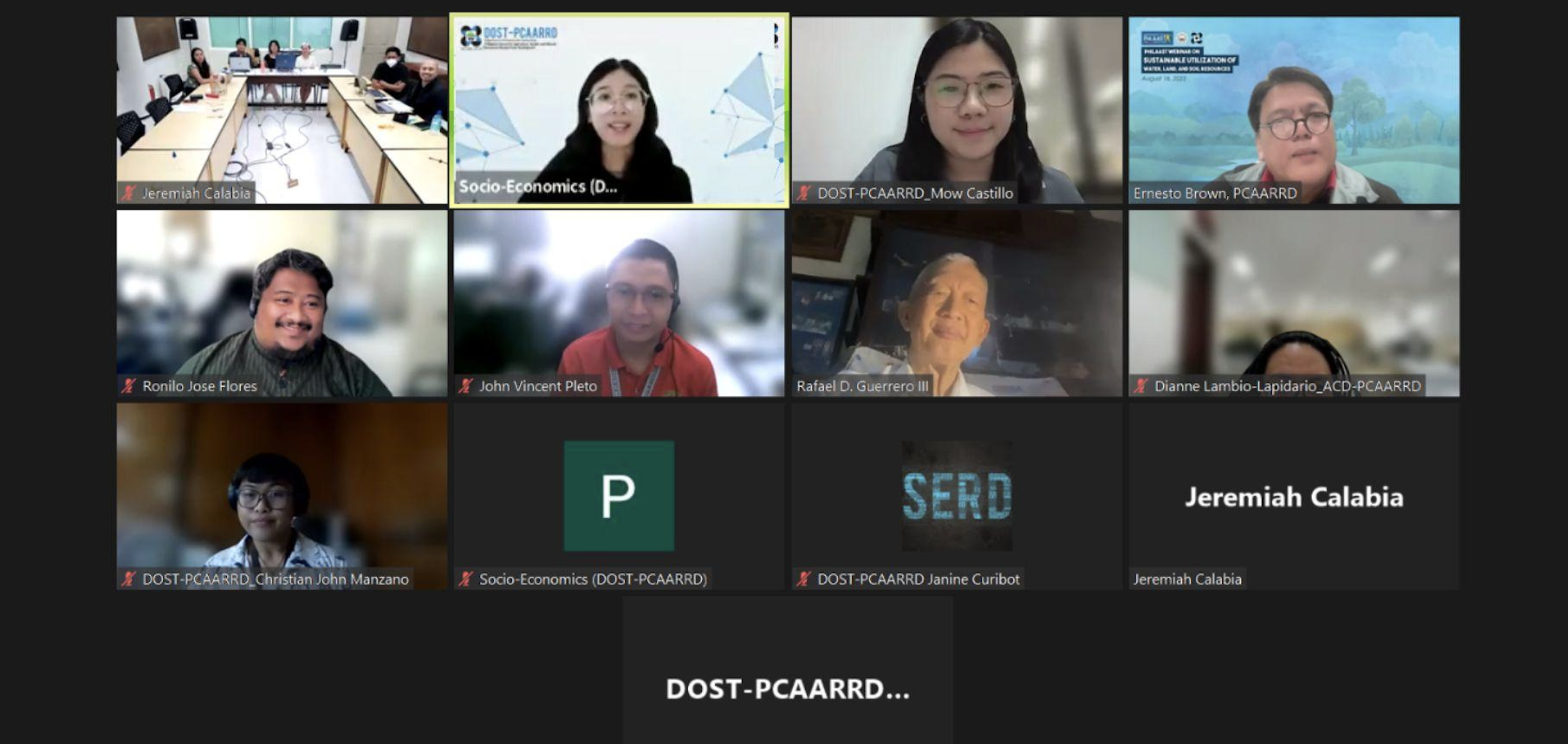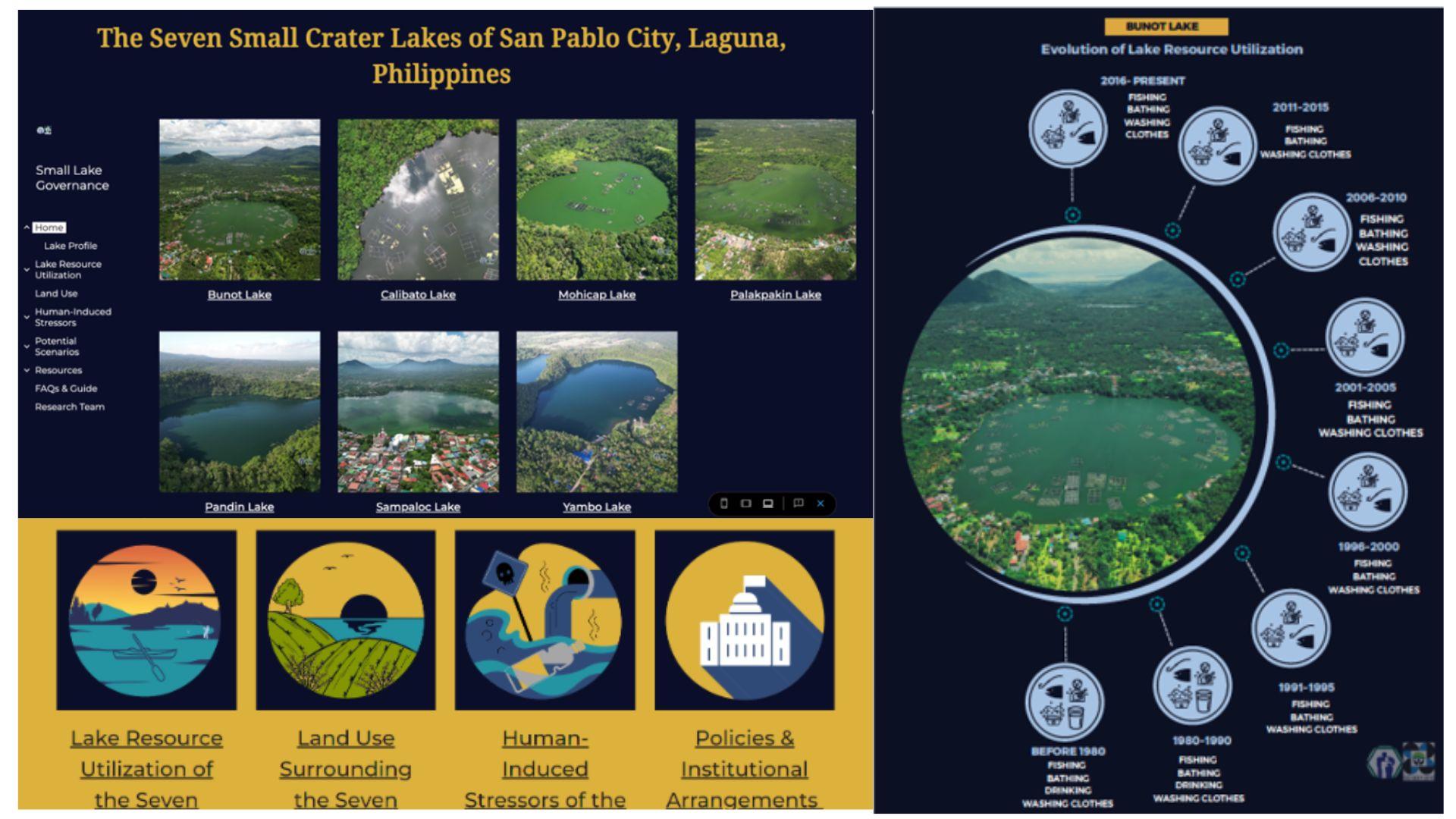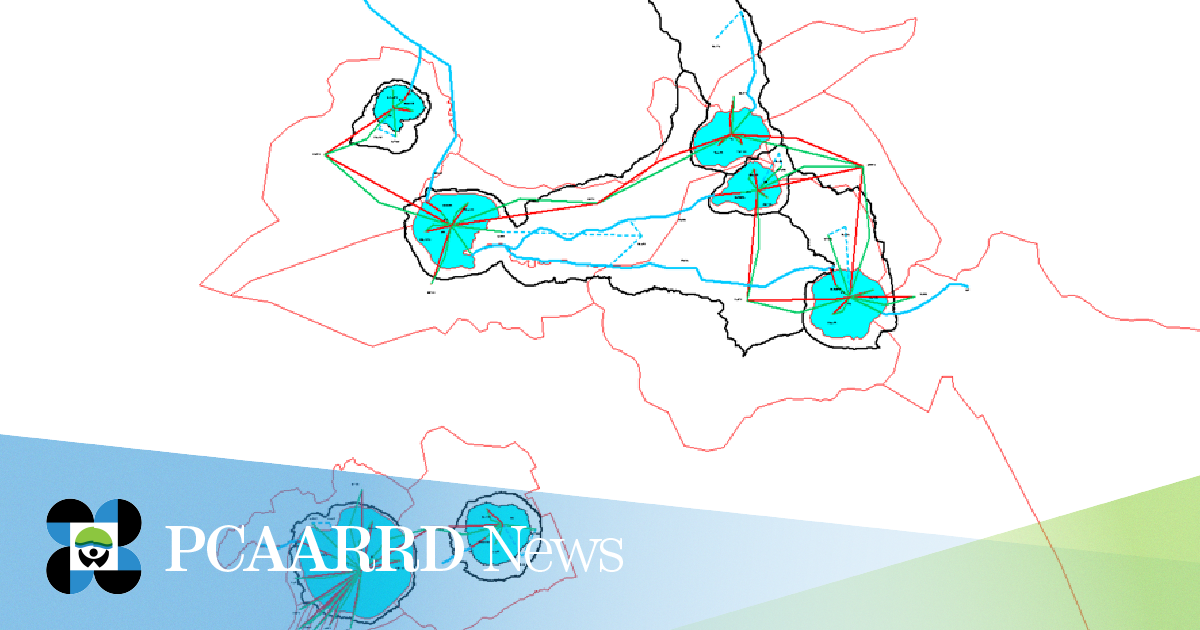
DSS 7 Lakes project terminal review meeting conducted via Zoom on April 17, 2024. (Image credit: SERD, DOST-PCAARRD)
The Seven Small Crater Lakes (SSCL) in San Pablo City, Laguna are important habitats for diverse organisms and economic engines for local communities, offering opportunities for local businesses, aquaculture, agriculture, and tourism. Despite its significance, like other bodies of water, research on small lakes in the Philippines has predominantly focused on the biophysical sciences. Studies on the cross-section of the human-environment interaction and governance of biophysical aspects contributing to the current situation of these lakes, are yet to be conducted.
Recognizing this gap, in 2022, the Philippine Council for Agriculture, Aquatic and Natural Resources Research and Development (DOST-PCAARRD) funded the project, "Decision Support System (DSS) For Effective Lake Governance of the Seven Small Crater Lakes in San Pablo City, Laguna," led by Dr. Rowena DT. Baconguis of the University of the Philippines Los Baños (UPLB).
This two-year project aimed to contribute to the existing knowledge and development practices by examining the governance system and institutional arrangements related to the management and conservation of the SSCL in Laguna. It sought to develop a DSS to enhance the effectiveness of lake governance in San Pablo City.
The project results were presented during its terminal review on April 17, 2024. The review was organized by DOST-PCAARRD’s Socio-Economics Research Division (SERD) under the guidance of Dr. Ernesto O. Brown. The review was attended by Dr. Rafael Guerrero III of Aquatic Biosystems, Professor John Vincent Pleto of UPLB, and Dr. Ronilo Jose Flores of UPLB.
One of the main highlights during the review was the presentation of the Water Evaluation and Planning System (WEAP) model developed by the team. The model considered current accounts before the enforcement of the 10% surface area (AQC SA) limit on aquaculture areas in lakes (RA 8550 Sec. 51) and the development and implementation of the San Pablo City Tourism Master Plan (SPC TMP). Potential socio-institutional and biophysical scenarios that were taken into account include:
- Business-As-Usual (BAU) - Population growth + Unregulated Aquaculture + Consistent tourist arrivals;
- Population Growth + Strict enforcement of 10% AQC SA + Consistent tourist arrivals;
- Population Growth + Unregulated Aquaculture + Tourism activities and strategies outlined in the SPC TMP; and
- Population Growth + Strict enforcement of 10% AQC SA + Tourism activities and strategies outlined in the SPC TMP.
This model was then utilized to simulate various scenarios for the future.
Preliminary findings from the scenario evaluation indicate that the strict enforcement of the 10% fish cage area restriction in Sampaloc Lake has a positive impact. It helps reduce the increase rate in biological oxygen demand (BOD), maintain levels of Ammonia (NH3) and Inorganic Phosphate (IPO4), and decrease Total Suspended Solids (TSS) over the forecasted period (2024–2030). The developed WEAP model is expected to guide the development of governance and management policies in planning the SSCL’s water resources.

Moreover, the project team highlighted the knowledge-sharing platform (KSP) they developed through the project. The KSP houses all significant knowledge and information related to the SSCL in San Pablo City, Laguna. It is expected to enable relevant knowledge dissemination for efficient decision-making to address problems.
During the review, Dr. Brown, Dr. Guerrero, and the resource persons commended the team for collecting significant data and information, which can provide valuable new insight into lake governance and management. They suggested improving the developed DSS sustainability by gathering more quality data, fixing variables, and incorporating additional scenarios in the model.

Knowledge sharing platform in the SSCL San Pablo City, Laguna. (Image credit: DSS 7 Lakes Project Team)
Additionally, Dr. Guerrero underscored the importance of stakeholders’ participation, particularly from the barangays surrounding the lake to ensure the sustainability of DSS.
The project team has committed to improve their model and has expressed their dedication to ensure long-term sustainability of DSS even after the project completion. Ultimately, the project’s success will result in more efficient lake management and governance in San Pablo City.
Moving forward, the project team is gearing up to apply the insights gained from the study in their recently approved project on the Twin Lakes of Sibulan, Negros Oriental.

